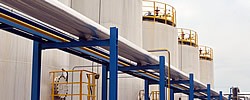SAE International has stretched the lower boundaries of engine oil viscosity categories, adding two new grades – SAE 8 and SAE 12 – to SAE J300, the Engine Oil Viscosity Grade Classification System.
The new grades were added at the request of Japanese automaker Honda. Their inclusion in J300 creates a globally recognized set of parameters to define oils of that are lighter than SAE 16, previously the lightest grade. It also raises the possibility that the new grades could be incorporated into industry engine oil performance standards, such as the API S series of light-duty oil specifications.
Lubrizol’s Mike Covitch, chairman of the SAE Engine Oil Viscosity Classification Task Force, told Lube Report the task force acted on Honda’s request to define the two new grades, which were added two years after the definition of SAE 16.
Honda has for years successfully lubricated a number of ultra-fuel-efficient passenger car models in Japan with a Honda-approved engine oil that sports SAE 8’s characteristics. That history led the original equipment manufacturer to push for the new grades to be added to SAE J300, opening the door for wider use around the globe.
Covitch doesn’t believe that Honda’s genuine oil was labeled with an SAE viscosity grade in Japan, however, because the grade was not yet defined by SAE J300. “With the re-issue of J300 JAN2015, it is now free to do so,” he said. “You might expect to see such products in the Japanese marketplace in the near future and with the creation of official SAE viscosity grades, you could begin to see SAE 8 and perhaps SAE 12 oils appearing outside of Japan, should Honda or any other OEM begin exporting or building vehicles that specify them in other countries.
“There is certainly a desire to have such oils available in North America as soon as feasible, since they could then be eligible for use in fuel economy certification procedures,” he added.
Bob Proctor, manager and principal engineer with Honda Research & Development in Raymond, Ohio, United States, affirmed that his company was able to supply Covitch’s SAE task force with technical data to support the new grades’ definitions. “I shared mostly the applications of the lower viscosity grades for vehicles in the Japan market, which was consisting of the grades at the time that ultimately fit the viscosity ranges used to establish the SAE 8 grade.”
Proctor added that Honda has plans for further application and growth for SAE 8 in Japan, “as well as initial applications starting in China and even Europe. At this time we have no immediate plans for application of an SAE 8 or SAE 12 grade in the North American market, although we are considering the future carefully for these grades.”
The development of ever-lower-viscosity engine oils has been a longtime goal of original equipment manufacturers. In 2011, Honda presented data at the ICIS Asian Base Oils & Lubricants Conference which showed that future engine oils designed for automobile fuel economy improvement would require new viscosity classifications below the then-current SAE system. Honda concluded that cooperation between the automotive, engine oil and additive industries would be a key factor in developing these oils, given the imminent need for these new SAE classifications.
Reiterating this need, the Rationale Statement for J300 JAN2015 states, “This revision continues the process of extending the SAE Engine Oil Viscosity Classification system to lower high-temperature high-shear-rate (HTHS) viscosities by adding two new high-temperature viscosity grades – SAE 12 and SAE 8 – to SAE J300 with minimum HTHS viscosity of 2.0 and 1.7 milliPascal-seconds, respectively. The benefit of establishing new viscosity grades is to provide a framework for formulating lower HTHS engine oils in support of the ongoing quest of Original Equipment Manufacturers (OEMs) to improve fuel economy.”
? SAE 8 is defined as having minimum kinematic viscosity at 100 degrees C of 4.0 centiStokes, and a KV100 maximum of less than 6.1 cSt. Its high-temperature/high-shear-rate viscosity at 150 C is 1.7 mPa?s (minimum).
? SAE 12’s KV100 limits are 5.0 cSt (minimum) and less than 7.1 cSt (maximum); the grade’s HTHS viscosity minimum is 2.0 mPa?s.
As SAE points out, the KV100 ranges of the new viscosity grades overlap in order to provide adequate formulating space for the grades. It urges formulators to review Section 6 of the updated document, for guidance on how to assign a single high-temperature viscosity grade to an engine oil with KV100 in the overlap regions. Copies of SAE J300 JAN2015 can be purchased from SAE at http://standards.sae.org.
- Products
-

- We are committed to the Lubrication and functional chemicals. Not only the better chemicals, we are also able to offer the high quality technology solutions.
- « Read more

